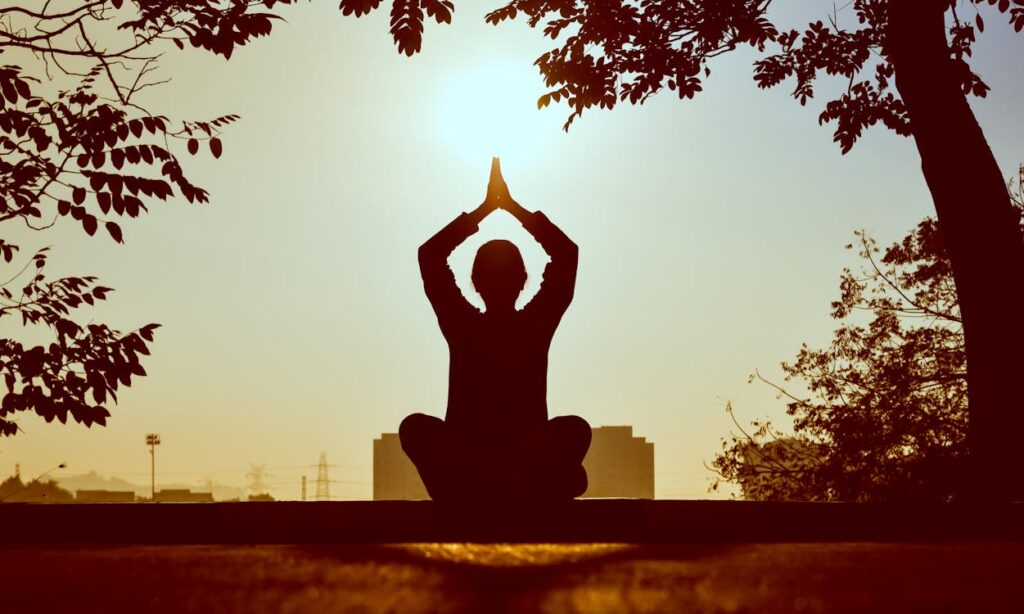If you’ve ever felt overwhelmed, scattered, or simply too busy to catch your breath, mindfulness can offer you a way back to yourself. The best part? You don’t need hours of meditation or fancy retreats to begin. Mindfulness is accessible, practical, and easier to start than you might think.
What Is Mindfulness, Really?
At its heart, mindfulness is the practice of paying attention to the present moment without judgment. It’s about noticing your thoughts, feelings, and sensations with curiosity rather than criticism.
You don’t have to “empty your mind” or sit cross-legged on a mountaintop. Mindfulness is about showing up for your life, as it is, with open eyes and an open heart.
Think of it like this: When you’re drinking a cup of coffee and truly savoring the aroma, taste, and warmth — instead of thinking about your inbox or to-do list — that’s mindfulness.
Why Start Practicing Mindfulness?
Before diving into how to get started, it’s helpful to understand why mindfulness is worth your time. Research has shown that regular mindfulness practice can:
- Reduce stress and anxiety
- Improve focus and concentration
- Boost emotional resilience
- Enhance sleep quality
- Increase overall happiness and well-being
Mindfulness doesn’t promise a life without stress or hardship, but it equips you with tools to meet challenges with greater calm and clarity.
Simple Entry Points into Mindfulness
If you’re new to mindfulness, the idea of “being present” might feel a little abstract. That’s okay. Let’s break it down with some simple, approachable ways to get started.
1. Mindful Breathing
The breath is a powerful anchor to the present moment. You can practice mindful breathing anytime — while waiting in line, before a meeting, or lying in bed.
How to start:
- Sit or stand comfortably.
- Bring your attention to your breath.
- Notice the sensation of the air entering your nose, filling your lungs, and exiting your body.
- When your mind wanders (and it will!), gently guide it back to your breath.
Start with just one minute a day and gradually increase as it feels comfortable.
2. Body Scan
A body scan helps you connect with physical sensations, releasing tension you may not even realize you’re holding.
How to start:
- Lie down or sit comfortably.
- Close your eyes if you feel safe to do so.
- Slowly move your attention from the top of your head to your toes, noticing any areas of tightness, warmth, coolness, or sensation.
- If you find a spot of tension, simply observe it without trying to change it.
You can find guided body scan meditations online if you prefer to follow along.
3. Mindful Walking
If sitting meditation isn’t your thing, mindful walking is a great alternative. It’s exactly what it sounds like — bringing your full attention to the act of walking.
How to start:
- Choose a quiet path, even if it’s just around your backyard or hallway.
- Walk slowly, noticing the lifting and placing of each foot.
- Feel the ground beneath you, the movement in your legs, the rhythm of your steps.
- If your mind drifts, bring it back to the sensation of walking.
This is especially helpful if you find yourself restless or antsy when trying traditional meditation.
4. Single-Tasking
In a world obsessed with multitasking, single-tasking is a radical act of mindfulness. Whether you’re washing dishes, answering emails, or eating lunch, focus on doing just one thing at a time.
How to start:
- Choose an everyday task.
- Fully immerse yourself in it. Notice the colors, textures, smells, sounds, and movements involved.
- When your mind tries to jump ahead to the next thing, gently return to the task at hand.
Over time, single-tasking can turn ordinary moments into opportunities for presence and peace.
Tips for Building a Mindfulness Habit
Getting started with mindfulness is often easy — keeping it going is where most people stumble. Here are a few tips to help you weave mindfulness into your life:
Start Small
Trying to overhaul your entire routine overnight usually backfires. Begin with five minutes a day. Consistency matters more than duration.
Set Reminders
It’s easy to forget mindfulness in the hustle of everyday life. Use gentle reminders: a sticky note on your desk, an alarm on your phone, or a bracelet you touch during the day.
Be Kind to Yourself
Mindfulness isn’t about doing it “perfectly.” Your mind will wander. You’ll forget to practice. It’s all part of the process. The goal is not to never drift — it’s to notice when you do and come back with compassion.
Connect with a Community
Consider joining a local meditation group, online class, or even inviting a friend to explore mindfulness with you. Having a community can make the practice more enjoyable and sustainable.
Common Misconceptions About Mindfulness
“I’m bad at it because I can’t stop thinking.”
Good news: You don’t have to stop thinking. Minds think, that’s their job. Mindfulness simply teaches you to observe your thoughts instead of getting caught up in them.
“I don’t have time for mindfulness.”
You don’t need an hour a day. Even 30 seconds of mindful breathing can shift your state of mind. It’s less about carving out extra time and more about infusing mindfulness into what you’re already doing.
“Mindfulness is only for calm, spiritual people.”
Mindfulness is for everyone, busy parents, stressed-out students, corporate executives, artists, truck drivers, you name it. You don’t have to change who you are; you just show up more fully as yourself.
Starting a mindfulness practice can feel a little daunting at first, but remember: it’s called “practice” for a reason. It’s a journey, not a destination.
You don’t need special equipment or a perfect environment. You only need a willingness to pause, breathe, and be present with what’s happening right now. Over time, these small moments of mindfulness can ripple out, creating big changes in how you experience your life.


